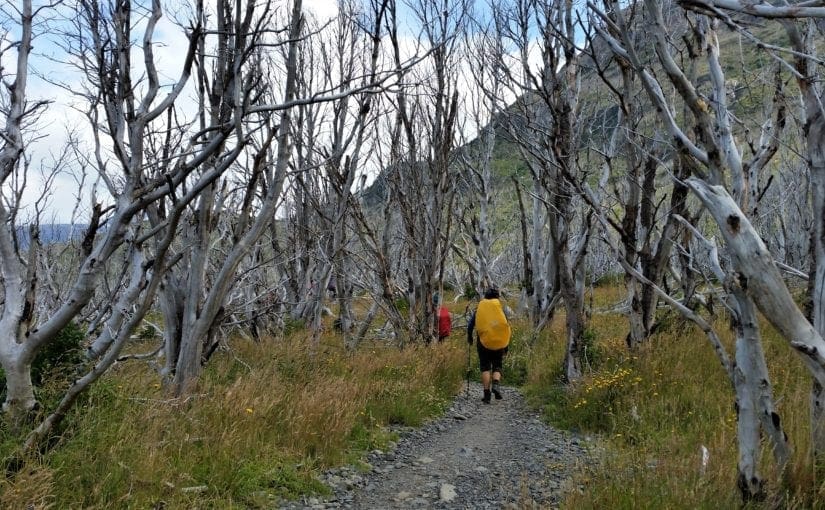Most recently updated July 7th, 2023
My feet hurt most of the time.
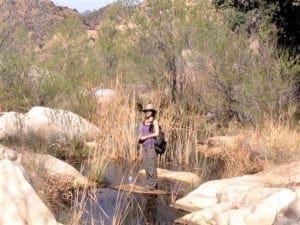
Accumulated damage from years of dance, martial arts, high heels, various athletics and now a couple of decades and lots of miles of hiking means my feet hurt more often than they don’t.
Add metabolic aging of my feet now that I’m in my 50’s, and it’s a recipe for some VERY painful feet.
But I’ve found ways to alleviate my foot pain and prevent more injury so I can keep doing the active things I love!
How to Care For Your Feet
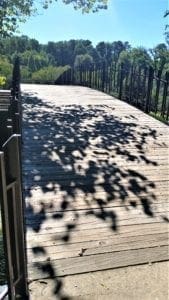
As a hiker, you can’t overestimate the value of wearing the best hiking boots you can to have an enjoyable hike and avoid possible injury.
But there are other things you can do to keep your feet happy beyond simply wearing good boots!
I love to be active outdoors and plan to keep on going for the long haul. That means investing effort in taking care of my feet and legs as much as I can.
These are some of my favorite tips to avoid or eliminate foot pain and keep your feet happy, healthy and ready for any adventure!
NOTE: Instead of illustrating this post with images of injured feet, I decided to share pictures of some beautiful things I’ve seen – while walking around 🙂
Some of my posts contain affiliate links. If you make a purchase through an affiliate link, I will receive a small payment at no additional cost to you. As an Amazon Associate, and other marketing affiliations, I earn from qualifying purchases. I do not get paid for recommendations, all opinions on this site are my own. See full Disclosure page here.
What Causes Foot Pain?
Before we can talk about treatment and prevention of foot pain or injury, we need to talk about possible causes.
If your feet hurt, it’s either from an injury, ill-fitting footgear, or some kind of activity.
The most basic possible cause of foot injury, and one of the least talked about, is simple aging of the feet.
And I hate to say it, but after around age 20 (when we stop growing), everything else is aging!
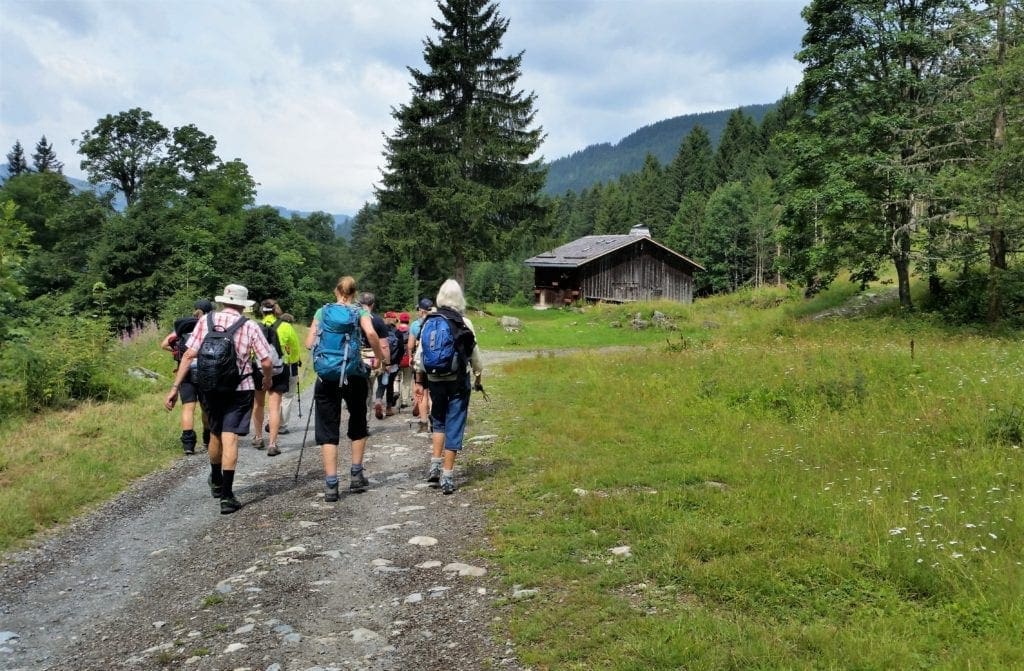
What Is Aging?
Growing old is 100 percent unavoidable and the aging process doesn’t discriminate.
It starts early and it affects every major organ and part of the body, including the feet.
Aging is the impact of time on the human body, and it occurs on multiple levels. On the simplest level, there are two main contributors to aging:
1. Accumulated Damage
Accumulated damage is all external. Exposure to toxins, the sun, harmful foods, pollution, and smoke all take a toll on the body.
Over time, these external factors can lead to tissue damage and the body falls behind in maintenance and repair of cells, tissues, and organs.
2. Metabolic Aging
Your cells are constantly turning food into energy, which produces harmful byproducts. The process of metabolizing and creating energy results in damage to the body over time.
Time Isn’t On Your Side
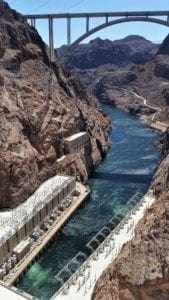
Aging can’t be avoided – and the alternatives aren’t good – but there are things you can do to slow the process down.
- If you don’t already have a fitness routine, get started now! Getting active and staying active is the best way to stave off illness and prevent injuries related to disuse.
- A healthy diet is very important, even if you don’t need to lose weight! Limiting consumption of processed foods and eating a diet rich in fish, fruits and vegetables helps slow down your metabolic aging.
And of course, don’t smoke or vape.
How Aging Affects Feet
Aging takes its toll on your feet and ankles just as it does the rest of your body.
Given the amount of stress we put on our feet in a lifetime – especially as hikers – eventually dealing with some foot problems seem almost unavoidable.
In addition to wear and tear of activity, there are natural changes that occur with the aging process that affect foot health, making problems like swelling and some skin conditions pretty common.

5 Common Problems of Aging Feet
Foot changes occur gradually with aging. These changes bring about several typical foot problems, which deal with extra stress from weight-bearing activities, like hiking and walking.
1. Changes to Skin of the Feet
Dry skin, especially on the soles of the feet, is a problem that may be solved by a daily application of a moisturizer to prevent cracking or an itchy rash.
The decreased fatty layer beneath the skin means reduced cushioning on the sole of the foot, which also contributes to cracked heels and calluses due to extra stress on the skin.
In addition, the decreased fat pad on the sole of the foot may contribute to an increased sensitivity to pain due to that loss of cushioning.
2. Toenail Changes for Aging Feet
Toenails usually become thicker and more brittle with age, making them more difficult to cut.
Nails become thicker because their growth slows over time, or due to hormonal changes, hypothyroidism or inadequate circulation to the limbs.
Onychomycosis, a fungal infection of the toenails, is another common cause of toenail thickening.
3. Changes to Foot Shape and Size
It’s not uncommon for people to have their shoe size increase by a half-size or more as they age.
With age, tendons and ligaments gradually lose strength and their ability to “spring back,” which can decrease the height of your arch and increase your foot length slightly so you need bigger shoes.
4. Arthritis, BUNIONS AND GOUT
Osteoarthritis is an inevitable consequence of years of stress on the joints. The ankle joint, subtalar joint, and the big toe joint are three joints that frequently develop arthritis.
Symptoms associated with bunions and hammer toes may worsen over the time due to the progression of arthritis within those toe joints. Gout is another disease that often manifests as intense arthritis symptoms at the big toe joint.
5. Foot and Ankle Swelling
One of the most common foot and ankle problems of aging is swelling. Finding the cause can be a little difficult, especially if there’s no obvious injury.
Leg vein problems usually cause swelling in a single limb at a time. Cardiovascular disease, some medications, and hormonal changes are possible causes of swelling that occur in both limbs.
Solving Aging Foot Problems
Fortunately, many age-related foot problems can be alleviated by using anti-inflammatory medicines like Ibuprofen or CBD Oil.
Also, applying soothing skin moisturizers, and wearing compression socks and well-fitted sole-cushioning boots when you hike will help a lot.
Age-appropriate training before a hike will also help prepare your feet and legs.
Unfortunately, some problems, like a tailor’s bunion, may eventually require surgery to correct. (You should talk to your medical professional for severe issues.)
How to Toughen Up Your Feet for Hiking
In addition to increased sensitivity due to age, old injuries or injuries on the trail like blisters or losing a toenail will ruin your hike.
It’s critical to understand your own feet and know how to keep them happy and prevent further injury.
Know Your Feet
You’re the only one that knows if you have any past injuries that act up with use, or one toe that likes to chafe it’s neighbor in hiking boots.
Do your feet tend to sweat? What about existing hotspots or places that tend to blister? Only you can answer.
Since you know what your individual problems are, you’re the best one to plan preventive solutions before you hit the trail.
One of the best preventive measures is getting boots that fit properly.
Get the Right Fit

When you buy boots, both length and width are equally important for a good fit.
A boot that fits well will help prevent injuries on the trail.
You want your shoes to hug your feet, from front to back, side to side, and top to bottom.
That way, your feet won’t slide around, and you’ll get more support from your boot.
That said, you should be sure to leave a little space between the front of your toe and the front of the boot so that your toe doesn’t bump into it – especially when going downhill.
For more details on choosing the right boot for your foot, and a selection of boot recommendations, read this article.
Bigger is Better
Your feet swell as you walk long distances, so you’ll want hiking shoes/boots 1/2 size larger than your regular shoe.
-
- Also, carrying a heavy pack will put pressure on your feet and they’ll spread out, so extra room will be needed.
- Bunions or bone spurs also feel better in roomier shoes.
- Make sure you’re wearing the thickest socks you hike in when trying on new boots – that way, they’ll never be too snug.
(If you’re looking for some advice and ideas about what kind of boots to get, check out my article How to Choose the Best Boots, my Gear page, and my post about choosing basic day-hike gear.)
Sweat Socks Are a Thing
If you have sweaty feet, you should try to keep them dry. If your feet aren’t sweaty but get wet in the rain or a puddle, the result will be the same – and wet feet often lead to blisters.
One of the best ways to keep feet dry is with a second pair of socks in your pack.
When taking a break around the half-way point of your walk, or when the rain lets up, you can remove your wet socks and put on a nice fresh dry pair.
No Tube Socks, Please

For any long distance walking, you’ll want hiking socks that wick away the moisture. Merino wool hiker socks are a good choice.
They’re a little pricey, but definitely worth it.
I use double-layered socks to prevent friction and blisters.
For layering socks, you’ll want thin wicking socks next to your feet and thicker socks over that.
Gaiters Can Keep the Rain Out
Sometimes you can’t avoid hiking in the pouring rain.

When the rain comes down hour after hour, it’s almost impossible to keep your feet dry.
Many hikers will wear gaiters over their hiking pants to keep the rain out.
Try wearing them under your pantleg if you can – you can’t get rain inside your gaiters if they’re worn on the inside.
Know Any Hot Spots?
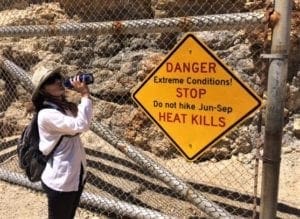
Hot spots are red areas on your feet that are warm to the touch and a little bit sore.
These are warning signs that you will get a blister if you don’t take care of the area immediately.
If you know where you’re prone to get a blister, you can avoid a hot spot by applying a thin layer of vaseline on the spot to prevent friction.
Duct tape is also a great way to prevent a blister, but never use duct tape after a blister has appeared. (Duct tape also makes a great splint for a broken toe. Just tape the toe to it’s neighbor for a splint. )
Leukotape to the Rescue!

If you missed the window for vaseline or duct tape, then Leukotape is your best friend. Leukotape is a rayon-backed rehabilitation tape with a high tensile strength.
Use the adhesive around, but not directly on, the blister and wrap the foot. Once wrapped, due to its zinc oxide adhesive, Leukotape will remain in place even when you’re in motion.
Leukotape can stay on for at least a day, or several if needed. The actual recommended length of time is 18 hours.
Hiking Blisters Treatment
There is a long-standing debate about whether to pop a blister or leave it alone.
If your blisters aren’t causing pain, it’s best to leave them intact. However, if the pain is preventing you from hiking it’s best to drain the blister.
An open sore could allow infection in, so be very careful to keep the area sterile. Use a sterilized needle, bandage it up immediately, and keep an eye out for infection.
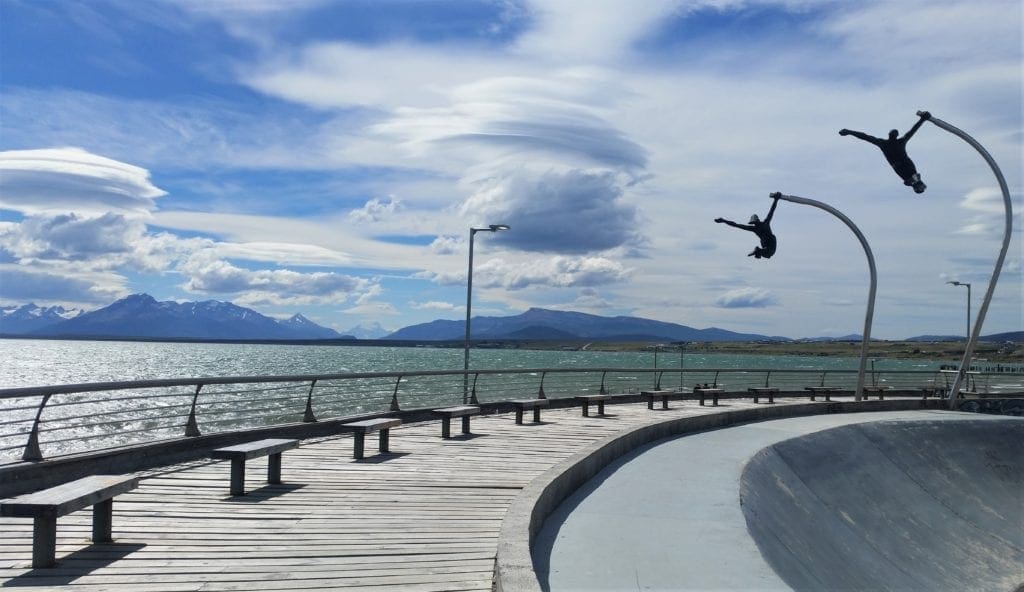
4 Steps to Safely Pop a Blister
If you decide to pop a blister, follow these 4 steps for the best results:
To Get New Idratherwalk Posts
sent directly to your inbox
(how convenient!)
Click this Button
- Clean the area around the blister with soap and water, an antiseptic wipe, or an alcohol wipe.
- Sterilize a needle or sharp knife by boiling for a few minutes or holding to a flame until red hot.
- When cool, use the needle or sharp knife to make the smallest incision possible to drain the fluid. (If the blister is on the heel or top of the foot, make the incision at the bottom of the blister so that gravity can help it stay drained.)
- Apply antibiotic ointment and bandage .
Preventive Foot Maintenance
Treat Crooked Toes

A crooked toe can suffer from the constant push from the other toes and the boot, and it can feel like a broken toe!
Using a toe splint will give you instant relief.
Try Profoot Toe Straight – you can buy a package of three from Amazon.
One will last several days.
Roll Your Feet

Before and after your walk, get into the habit of rolling your feet. Use a hard ball like a lacrosse ball, a specially designed foot roller, or a massage ball.
Or you could use a dog toy – just be sure it doesn’t have a squeaker!
Roll each foot lengthwise, making sure you make several passes to cover the entire width of your foot.
Next, roll across, left to right. Start just below your toes, and work down to your heel with each pass.
Rolling your feet not only releases the tight muscles of your feet, it also works to release your hamstrings and reduces the pain of plantar fasciitis and improves circulation.
Keep Your Toenails Short
Prevent bruising (black toe nails) by trimming the nails as short as possible.
You don’t want to bang your toenails against the tip of your boot, as it may result in a bruised toe and a potentially lost toenail.
Train Your Feet Before a Hike
When you train properly for big hikes or extended backpacking trips, your body and feet build up the toughness required to handle long days on the trail.
Complete several prep hikes, of increasing distance and difficulty, to have fewer problems with blisters.
How to Break in Hiking Boots

A big hiking trip is the wrong time to try brand new hiking boots.
Wear a new pair around town, to the office, and on a few short hikes to break them in BEFORE your big hike.
If your footwear is properly broken in you’ll be less likely to have sore feet , hotspots, and blisters on the trail.
Preventive Foot Care In A Nutshell
- Know your feet!
- Buy properly fitting boots/shoes
- Change your wet socks
- Prevent blisters with vaseline, duct tape or layered socks
- Roll your feet before and after a long distance walk
- Keep your nails short
- Train Your Feet and Legs
- Break in Your Boots
After-Hike Foot Care
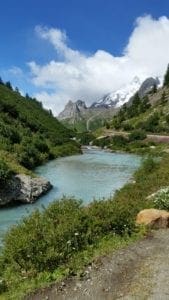
A common goal among travelers is to get the most out of every day – whether it’s an active adventure (like a hike) or a cultural exploration.
If you have limited vacation days, and you’ve traveled to an exotic location, of course you want to do as much as possible.
The only problem is that walking around all day results in tired and sore feet.
It can be especially difficult if you’re on a multi-day hiking trip and you’re wondering how you can possibly hit the trail again tomorrow!
Here are some tips to on how you can alleviate foot pain so you be ready for the next day’s adventures.
How To Care for Your Feet After Walking
Stretch Your Feet
One of the best ways to relieve your foot pain is to stretch your muscles.
Perform a two-minute stretch beginning from the tip of your toes up to your legs.
For a finishing move, push your feet against a wall to get that long, final stretch.
Put Your Feet Up

It’s not just a saying! Many people recommend that you elevate your feet to prevent swelling.
This promotes faster healing of the muscles, too.
Elevate your feet at a 30-degree angle from your head.
Prop them up on a stack of pillows while you’re sleeping or reading.
Soak Those Toes!
Put warm water in a bowl and add some essential oils to it.
Some oils you can use are tea tree oil (anti-fungal and antiseptic), lavender (calming and soothing), peppermint, chamomile and eucalyptus (refreshing).
These oils can help soothe the soreness in your feet, and can cure a host of other problems too.
Double-Dip Them

You can always go for the basics – a hot and cold water foot bath.
Place warm water in one bowl and cold water on the other.
Dip your feet in hot water for 2 minutes, then switch to cold water.
This basic treatment can open and close the veins in your feet which can promote proper blood circulation to help relieve your sore and aching feet.
Wear Compression Socks
Another effective way to alleviate foot pain is to get some compression socks.
Wearing compression socks, like a cold and hot water foot bath, is good for your circulation.
Take Off Your Shoes!
Feet are made for all kinds of movement and are built to function well, even barefoot! And it turns out that’s also the best way to maintain mobility in your feet.
Movement experts recommend walking barefoot to keep your feet happy, healthy and strong between long hikes where they’re constricted in your boots.
Enjoying shoe-free time is one of the best ways to prevent injury while outside.
After Hike Care Summary
- Stretch your feet
- Put your feet up
- Soak your feet with oils
- Do a hot/cold water foot bath
- Wear compression socks
- Take off your shoes!!
I hope you’ve found these foot care tips helpful, and that you’re able to hike pain free for many miles and many years to come!

Leave a comment about your own remedies, or if you have a question I will reply as soon as I can.
If you’re looking for some travel pointers or ideas for your next adventure, check out my Travel Resources page.
Thanks for stopping by – see you next time! LJ
To Get New Idratherwalk Posts
sent directly to your inbox (how convenient!) Click this Button
If you like this post, please share it!
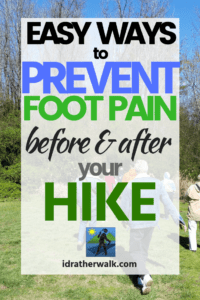
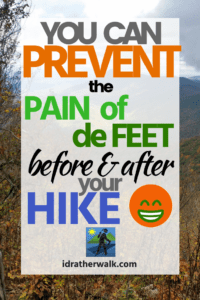

LJ has spent much of her free time as a single Mom – and now as an empty-nester – hiking in the US and around the world. She shares lessons learned from adventures both local and in exotic locations, and tips on how to be active with asthma, plus travel, gear, and hike planning advice for parents hiking with kids and beginners of all ages. Read more on the About page.

